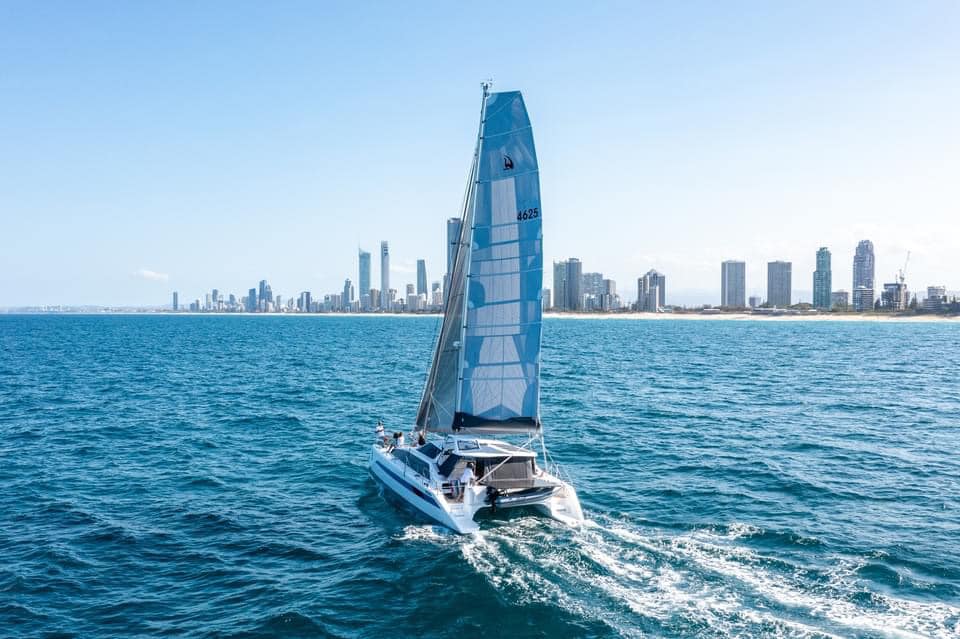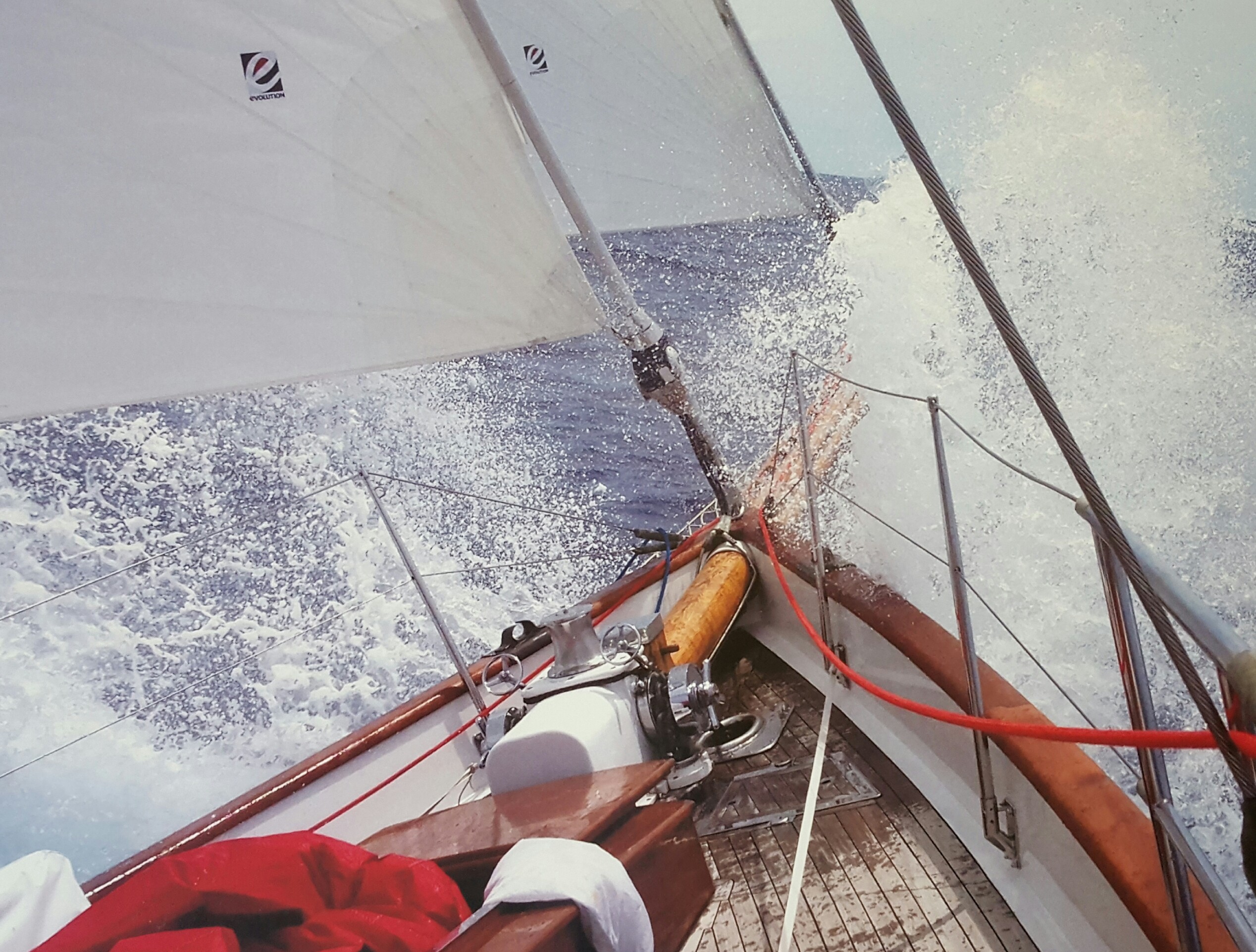By: Andy Camarda
Overview
Tri-radial sails are a step up in performance from traditional crosscut sails, offering better shape retention and load distribution. Designed with a radial panel layout that aligns fabric strength with the sail’s primary load paths, tri-radial sails provide improved durability and efficiency. These sails cover a broad spectrum of applications, from durable cruising sails to lightweight racing options. Depending on material choices, tri-radial sails can be a cost-effective upgrade from crosscut sails or approach the performance and price range of composite sails.

Materials and Construction
Tri-radial sails are built using warp-oriented fabrics, meaning the strongest fibers run along the length of the material roll. This construction allows for better alignment of fiber strength with the loads applied across the sail.
For durability-focused applications, tri-radial sails can be made from woven polyester options like Dacron or woven Dyneema fabrics such as Dimension Polyant’s Hydranet. For higher-performance applications, laminated options are available with a variety of load-bearing fibers, including polyester, aramid, carbon, and Dyneema. These laminates can also be paired with a selection of outer skins, such as woven taffeta for added durability or Light Skin for a balance of weight savings and protection. Like crosscut sails, tri-radial sails are paneled sails, meaning they are assembled from pre-made materials that are cut and stitched together, balancing performance and cost-effectiveness.
Precision Manufacturing for Improved Performance
We utilize modern computer-aided design and computer-driven sail cutting to optimize panel layout and material usage. This ensures consistency, accuracy, and maximized efficiency in every tri-radial sail we produce. By combining proven construction methods with precise engineering, tri-radial sails offer superior shape retention and load distribution compared to crosscut designs.

Performance and Durability
The radial panel layout of tri-radial sails distributes loads more efficiently, reducing distortion and improving shape-holding over time. This results in a sail that performs better in a wider range of conditions, particularly in higher wind loads. Because tri-radial sails use lower-stretch materials and align fibers with sail loads, they experience less shape deformation than crosscut sails, maintaining their efficiency for longer. While they do not offer the absolute top-tier performance of composite sails, they are an excellent upgrade for those seeking enhanced control and longevity.
Ideal Applications
Tri-radial sails provide an excellent balance between durability and performance, making them ideal for:
- Club and Offshore Racing: The improved shape retention and load distribution make triradial sails a strong choice for competitive sailors.
- Performance Cruising: Sailors looking for better control, especially in mixed wind conditions, will appreciate the stability and efficiency of triradial construction.
- Offshore and Distance Sailing: With better shape-holding and durability compared to crosscut sails, tri-radial sails are well-suited for extended passages and offshore use.
Get in Touch
Interested in upgrading to triradial sails? Our expert team can help you find the right sail for your boat and sailing style. Explore our triradial sails or request a quote today. For more information and resources on sails and sailing, visit our Learning Center.
Tri-radial sails provide an excellent middle ground between affordability and performance, giving sailors improved efficiency and durability without the higher cost of composite sails.



